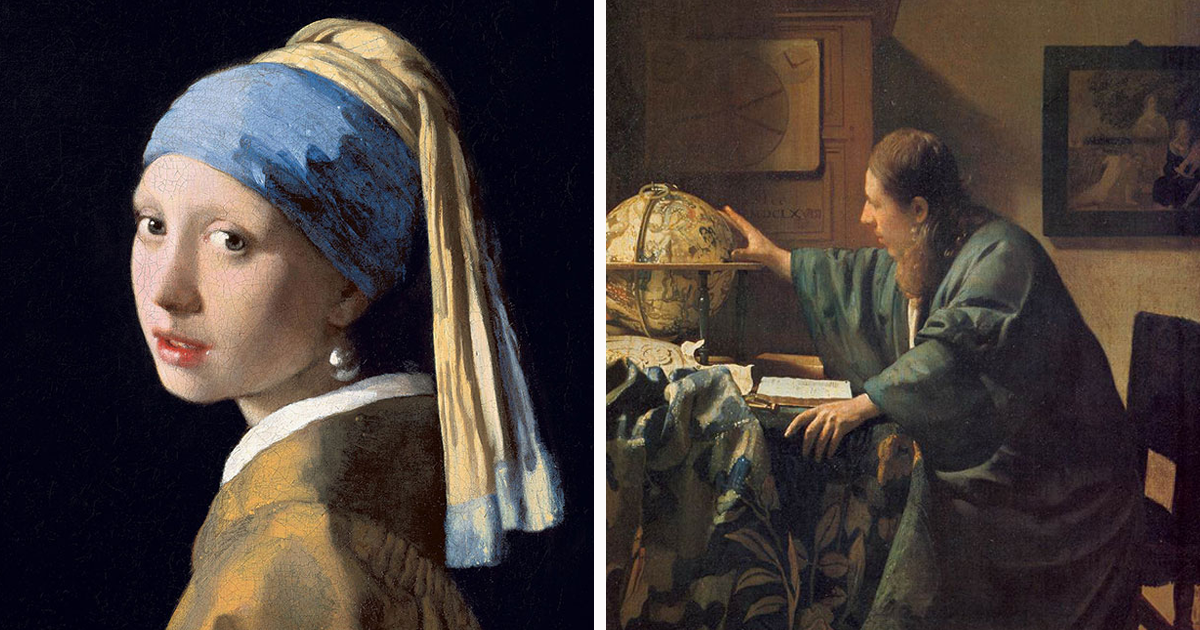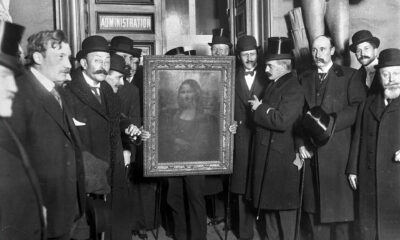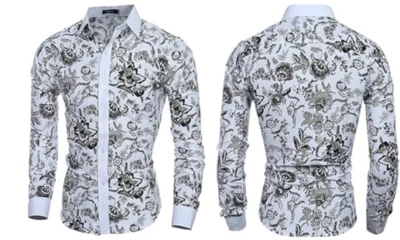Life style
The Most Famous Paintings of Women: A Journey Through Art History

Art has always been a reflection of society, culture, and individual expression. Among the myriad subjects that artists have explored, the depiction of women has remained a central theme. Women have been portrayed in various roles and forms, each representation echoing the artist’s vision and the societal context of the time. This article delves into some of the most famous paintings of women, exploring their stories, the artists behind them, and their lasting impact on the world of art.
1. Mona Lisa by Leonardo da Vinci
Perhaps the most famous painting in the world, the “Mona Lisa” by Leonardo da Vinci, has captivated audiences for centuries. Painted between 1503 and 1506, this masterpiece is renowned for the subject’s enigmatic expression, often described as a mysterious smile. The identity of the woman remains a subject of debate, with many believing she is Lisa Gherardini, the wife of a Florentine merchant. Housed in the Louvre Museum in Paris, the “Mona Lisa” is celebrated not just for its exquisite technique but also for its profound psychological depth.
2. The Birth of Venus by Sandro Botticelli
“The Birth of Venus,” created by Sandro Botticelli in the mid-1480s, is an iconic representation of classical mythology. This painting depicts Venus, the goddess of love and beauty, emerging from the sea on a shell. Botticelli’s portrayal of Venus is both ethereal and graceful, embodying the idealized beauty of the Renaissance era. The painting is housed in the Uffizi Gallery in Florence, Italy, and remains a quintessential example of Renaissance art’s celebration of mythological themes.
3. Girl with a Pearl Earring by Johannes Vermeer
Often referred to as the “Mona Lisa of the North,” Johannes Vermeer’s “Girl with a Pearl Earring” is a masterpiece of Baroque art. Painted around 1665, the work is not a portrait in the traditional sense but rather a “tronie,” a study of a character or type. The girl’s exotic dress, the turban, and the enigmatic expression, combined with the luminous pearl earring, create an aura of mystery and intrigue. The painting resides in the Mauritshuis Museum in The Hague, Netherlands, and continues to inspire fascination and speculation about the identity of the sitter.
4. Whistler’s Mother by James McNeill Whistler
Officially titled “Arrangement in Grey and Black No. 1,” “Whistler’s Mother” is one of the most famous American paintings. Created by James McNeill Whistler in 1871, the painting is a portrait of the artist’s mother, Anna McNeill Whistler. The work’s stark composition and the sitter’s solemn demeanor evoke a sense of dignity and maternal strength. Currently housed in the Musée d’Orsay in Paris, this painting is often seen as an emblem of motherhood and familial respect.
5. Las Meninas by Diego Velázquez
Diego Velázquez’s “Las Meninas”, painted in 1656, is a complex and intriguing work that features the young Infanta Margaret Theresa surrounded by her entourage of maids of honor, chaperones, a dog, and even Velázquez himself. This painting is renowned for its intricate composition and the interplay of gazes, creating a dynamic narrative about the nature of representation and perception. “Las Meninas” is housed in the Museo del Prado in Madrid and is celebrated as one of the greatest masterpieces of Western art.
6. Olympia by Édouard Manet
Édouard Manet’s “Olympia”, painted in 1863, caused a scandal when it was first exhibited due to its provocative subject matter. The painting depicts a reclining nude woman, unabashedly gazing at the viewer, with a black maid offering her flowers. The model, Victorine Meurent, and the subject’s confrontational directness challenged traditional representations of the female nude. “Olympia” is a pivotal work in the transition from Realism to Impressionism and is currently housed in the Musée d’Orsay in Paris.
7. Portrait of Adele Bloch-Bauer I by Gustav Klimt
Known as “The Lady in Gold“, Gustav Klimt’s “Portrait of Adele Bloch-Bauer I” is a dazzling example of the artist’s Golden Phase. Completed in 1907, the portrait is characterized by its opulent use of gold leaf and intricate patterns. Adele Bloch-Bauer, a wealthy Viennese patron of the arts, is depicted with a serene and contemplative expression. The painting, which was looted by the Nazis during World War II, was later restituted to Bloch-Bauer’s heirs and now resides in the Neue Galerie in New York City.
8. The Two Fridas by Frida Kahlo
Frida Kahlo’s “The Two Fridas,” painted in 1939, is a poignant and deeply personal work. The double self-portrait depicts two versions of the artist sitting side by side, holding hands. One Frida wears a traditional Tehuana dress, representing her Mexican heritage, while the other is dressed in European attire. The painting reflects Kahlo’s exploration of her identity and the emotional turmoil following her divorce from Diego Rivera. “The Two Fridas” is housed in the Museo de Arte Moderno in Mexico City.
9. American Gothic by Grant Wood
“American Gothic,” painted by Grant Wood in 1930, is one of the most recognizable images in American art. The painting portrays a stern-looking farmer and his daughter (often mistaken for his wife) standing in front of a Gothic-style house. The models were Wood’s sister and his dentist. The work is often interpreted as a depiction of the rural American spirit during the Great Depression. “American Gothic” is part of the collection at the Art Institute of Chicago.
10. Portrait of Madame X by John Singer Sargent
John Singer Sargent’s “Portrait of Madame X,” painted in 1884, caused a scandal when it was first exhibited due to its suggestive pose and the subject’s striking beauty. The portrait features Virginie Amélie Avegno Gautreau, a Parisian socialite known for her beauty and style. Sargent’s bold composition and the subject’s provocative demeanor challenged the conventions of portraiture. The painting, now in the Metropolitan Museum of Art in New York, is regarded as one of Sargent’s masterpieces.
Conclusion
The portrayal of women in art is as varied and complex as the artists who create these works. From the serene and mysterious “Mona Lisa” to the bold and defiant “Olympia,” these paintings offer a window into different eras, cultures, and artistic movements. Each masterpiece not only highlights the beauty and grace of its subject but also reflects broader themes of identity, power, and societal norms. As we continue to admire these iconic works, we are reminded of the enduring power of art to capture the essence of the human experience.
Life style
The Perfect Guide to Choosing Anniversary Flowers

Introduction
Anniversaries are special milestones that celebrate love, commitment, and cherished memories. One of the most timeless and heartfelt ways to express your affection is through flowers. Whether it’s your first anniversary or your fiftieth, the right floral arrangement can convey emotions words sometimes can’t. This guide explores the significance of anniversary flowers, popular choices, and tips for selecting the perfect bouquet. We’ll also discuss the convenience of anniversary flowers delivery and how to make your gift even more memorable.
The Significance of Flowers in Anniversary Celebrations
Flowers have been symbols of love and devotion for centuries, with different blooms carrying unique meanings. Opting for anniversary flowers delivery ensures your gift arrives fresh and beautifully arranged, making the occasion even more special.
Key reasons flowers are perfect for anniversaries:
- Romantic Symbolism – Roses, lilies, and tulips represent love and passion.
- Personalized Messages – Different colors convey distinct emotions (red for love, pink for admiration).
- Timeless Elegance – A well-chosen bouquet enhances any celebration.
Whether you’re near or far, having flowers delivered adds a thoughtful touch to your anniversary surprise.
Best Flower Choices for Different Anniversaries
Each anniversary year has traditional and modern floral associations. Here are some ideal picks:
- 1st Anniversary (Paper) – Carnations (symbolizing young love)
- 5th Anniversary (Wood) – Daisies (representing loyalty and simplicity)
- 10th Anniversary (Tin/Aluminum) – Daffodils (symbolizing joy and renewal)
- 25th Anniversary (Silver) – Irises (meaning wisdom and admiration)
- 50th Anniversary (Gold) – Yellow roses (celebrating enduring love)
Matching flowers to the anniversary year adds a meaningful layer to your gift.
Factors to Consider When Choosing Anniversary Flowers
Before selecting a bouquet, keep these aspects in mind:
- Recipient’s Preferences – Favorite flowers or colors make the gift more personal.
- Seasonal Availability – Peonies in spring, sunflowers in summer, etc.
- Arrangement Style – Classic roses, mixed bouquets, or elegant orchids.
- Fragrance – Some flowers, like lilies, have a strong scent, while others are subtle.
A well-considered choice ensures your flowers resonate deeply with your partner.
Why Fresh Flowers for Anniversaries Make the Best Gift
While chocolates and jewelry are great, flowers for anniversaries remain a classic for good reason:
- Instant Emotional Impact – Bright, fresh blooms create an immediate sense of joy.
- Versatility – Suitable for any anniversary, whether casual or grand.
- Customization Options – Add-ons like chocolates, vases, or handwritten notes enhance the gift.
- Symbolic Longevity – Just as love grows, flowers can be preserved as keepsakes.
A beautifully arranged bouquet is a gesture that never goes out of style.
Tips for Preserving Anniversary Flowers
Make your floral gift last longer with these care tips:
- Trim Stems Diagonally – Helps flowers absorb water better.
- Change Water Daily – Prevents bacterial growth.
- Keep Away from Direct Sunlight – Extends freshness.
- Use Flower Food – Packets provided with bouquets help nourish blooms.
For a lasting memory, consider drying petals or pressing them in a frame.
Unique Ways to Present Anniversary Flowers
Go beyond the traditional bouquet with these creative ideas:
- Flower Subscription – Monthly deliveries to keep the celebration ongoing.
- Flower Wall or Petal Path – For a grand romantic gesture.
- Personalized Message-in-a-Bottle – Combine flowers with a heartfelt letter.
- Surprise Delivery at Work – Make their day extra special.
Adding a personal twist makes the gift unforgettable.
Conclusion
Anniversary flowers are more than just a gift—they’re a timeless expression of love. Whether you choose a classic red rose bouquet or a modern mixed arrangement, the right flowers can make your anniversary unforgettable. With the convenience of anniversary flowers delivery, you can surprise your loved one no matter where you are. And when you select the perfect flowers for anniversaries, you’re not just giving a beautiful present—you’re celebrating your journey together in the most heartfelt way. Choose wisely, and let your flowers speak the language of love.
Life style
Rejuvenation Skin Care: Your Guide to Timeless Beauty and Healthy Skin

Introduction
In today’s fast-paced world, maintaining healthy, youthful skin requires professional care and advanced treatments. At Re-juvenation Skin Care Clinic, we combine science-backed techniques with personalized attention to help you achieve your skincare goals. Whether you’re seeking preventive maintenance or transformative results, our classic Re-juvenation Skin Care Clinic approach blends time-tested methods with cutting-edge technology. This comprehensive guide explores our philosophy, services, and what makes professional skin rejuvenation different from at-home routines.
The Re-juvenation Skin Care Clinic Philosophy
Our Re-juvenation Skin Care Clinic operates on three core principles:
Personalized Treatment Plans
- Comprehensive skin analysis
- Custom-blended product formulations
- Condition-specific protocols
Science-Based Approaches
- Medical-grade equipment
- Clinically proven ingredients
- Results-driven methodologies
Holistic Wellness Integration
- Nutritional counseling
- Stress management techniques
- Lifestyle optimization advice
We treat skin as an organ reflecting overall health, not just a surface to be decorated.
Common Skin Concerns We Address
Our clinic specializes in treating:
✔ Aging-Related Issues
- Fine lines and wrinkles
- Loss of elasticity
- Age spots and pigmentation
✔ Environmental Damage
- Sun damage repair
- Pollution protection
- Dehydration reversal
✔ Medical Conditions
- Acne and rosacea
- Eczema and psoriasis
- Scarring and stretch marks
✔ Preventive Maintenance
- Collagen stimulation
- Barrier function strengthening
- Early intervention strategies
Each concern requires specialized treatment protocols for optimal results.
Our Signature Treatment Technologies
We invest in medical-grade equipment for superior outcomes:
Resurfacing Modalities
- Fractional laser treatments
- Medical microdermabrasion
- Chemical peel systems
Stimulation Therapies
- Radiofrequency skin tightening
- Microcurrent facial toning
- LED light therapy
Injection Techniques
- Neuromodulators for dynamic wrinkles
- Dermal fillers for volume restoration
- Mesotherapy for nutrient delivery
All procedures are performed by licensed professionals with extensive training.
The Classic Re-juvenation Skin Care Clinic Experience
Our classic Re-juvenation Skin Care Clinic package includes:
Consultation Process
- Detailed skin mapping
- VISIA complexion analysis
- Lifestyle assessment
Treatment Protocol
- Deep cleansing preparation
- Customized active serums
- Specialized massage techniques
- Targeted mask applications
Post-Treatment Care
- Homecare product recommendations
- Follow-up scheduling
- Progress tracking
This comprehensive approach ensures lasting results beyond the treatment room.
What to Expect During Your Visit
A typical appointment includes:
- Skin Assessment (15-20 minutes)
- Visual examination
- Digital imaging
- Treatment Session (30-90 minutes)
- Cleansing and prep
- Primary procedure
- Soothing applications
- Post-Care Consultation (10-15 minutes)
- Immediate aftercare instructions
- Product recommendations
Most clients notice visible improvements after just 1-3 sessions, with optimal results appearing after a complete treatment series.
Maintaining Results Between Visits
Extend your clinic results with:
✔ Medical-Grade Homecare
- Pharmaceutical-strength retinoids
- Antioxidant serums
- Growth factor formulations
✔ Lifestyle Practices
- SPF 30+ daily application
- Adequate hydration
- Antioxidant-rich diet
✔ Periodic Maintenance
- Monthly facials
- Seasonal peel treatments
- Annual skin assessments
Consistency is key for sustained skin health improvement.
Conclusion
At Re-juvenation Skin Care Clinic, we believe beautiful skin begins with healthy skin. Our classic Re-juvenation Skin Care Clinic methodology combines advanced dermatological science with individualized attention to address your unique complexion needs. From cutting-edge treatments to timeless skin care wisdom, we provide comprehensive solutions for all skin types and concerns. Whether you’re beginning your skincare journey or seeking to enhance an existing routine, professional guidance makes the difference between temporary fixes and lasting transformation. Schedule your consultation today to discover how our evidence-based approach can help you achieve and maintain your healthiest, most radiant skin.
Life style
The Importance of Consistency Across Your Digital Profiles

A consistent digital presence strengthens your professional brand and ensures that potential employers, clients, and collaborators receive a clear and unified impression of your expertise. Inconsistent information across multiple platforms can create confusion and weaken your credibility.
Aligning Information Across Platforms
Ensure that your job titles, work history, and skills are consistent across LinkedIn, personal websites, and other professional platforms. Discrepancies may raise questions about the accuracy of your experience.
Using a Cohesive Personal Brand
Your profile photo, headline, and summary should reflect the same tone and message across different platforms. A well-defined brand makes it easier for recruiters and industry professionals to understand your expertise and career focus.
Synchronizing Updates and Achievements
Regularly update all your profiles with new skills, certifications, and accomplishments. Keeping information current demonstrates engagement and growth in your field.
For expert guidance on crafting a professional and consistent digital presence, visit Professional Profile.
About Professional Profile
Professional Profile helps professionals craft compelling digital profiles that amplify their online presence and open doors to career opportunities. Through expert advice, tools, and resources, Professional Profile empowers individuals to showcase their skills, build a personal brand, and navigate the digital landscape for career success.
-

 News2 years ago
News2 years agoVaping: Beyond the Hype – Unveiling the Risks and Realities
-

 Fashion2 years ago
Fashion2 years agoWhat is λιβαισ? A Complete Guide
-

 Entertainment2 years ago
Entertainment2 years agoUnleashing Geekdom: Exploring the Wonders of Geekzilla Radio
-

 Games2 years ago
Games2 years agoHow to Download Games From ApunKaGames: A Comprehensive Guide
-

 Fashion8 months ago
Fashion8 months agothesparkshop.in/bear-design-long-sleeve-baby-jumpsuit
-

 News8 months ago
News8 months agoUnlocking the Magic of Gemstones: A Comprehensive Guide
-

 Life style2 years ago
Life style2 years agoDemystifying λυσασ: Unveiling the Enigmatic Concept
-

 Fashion8 months ago
Fashion8 months agoThesparkshop.In Clothing Men
